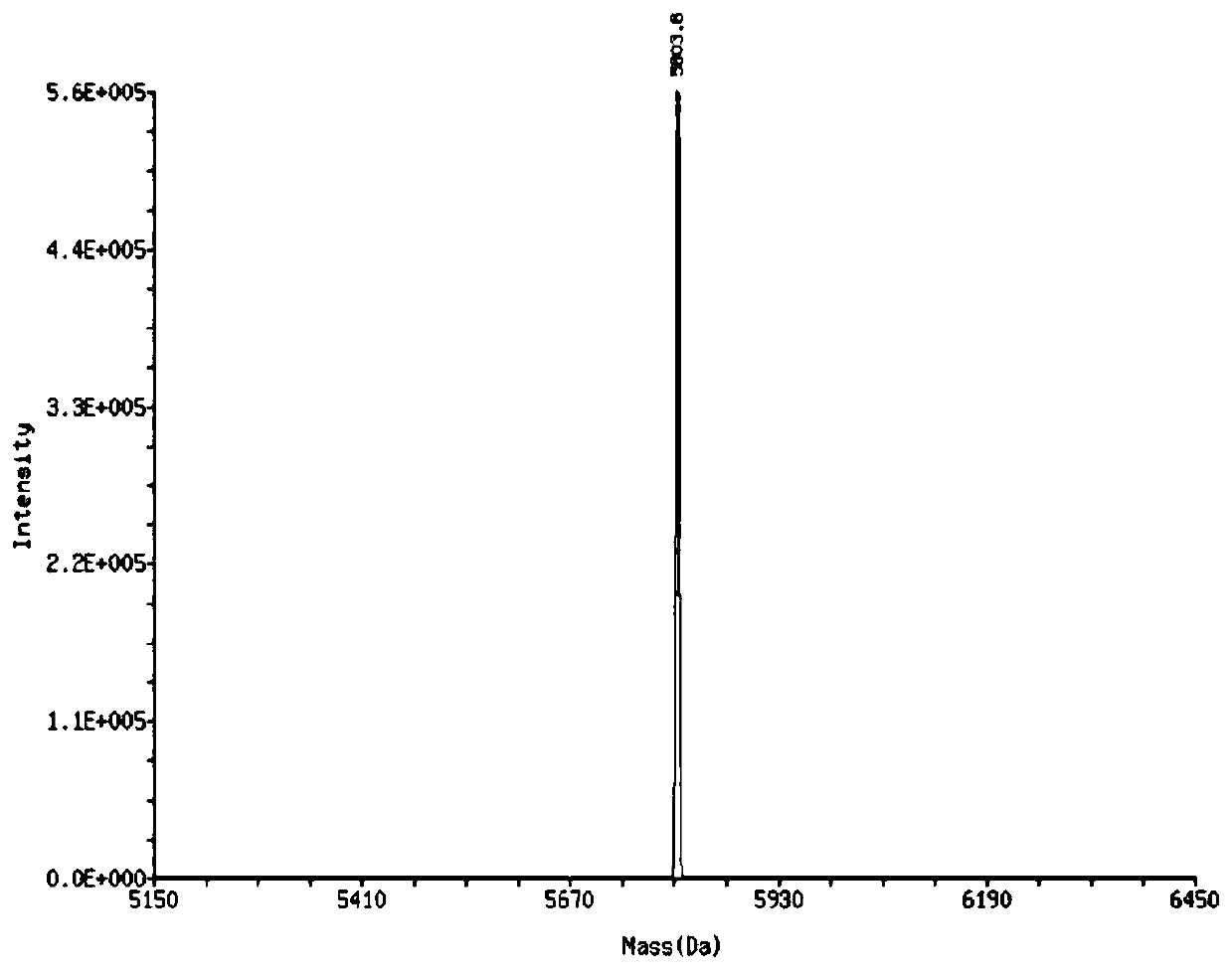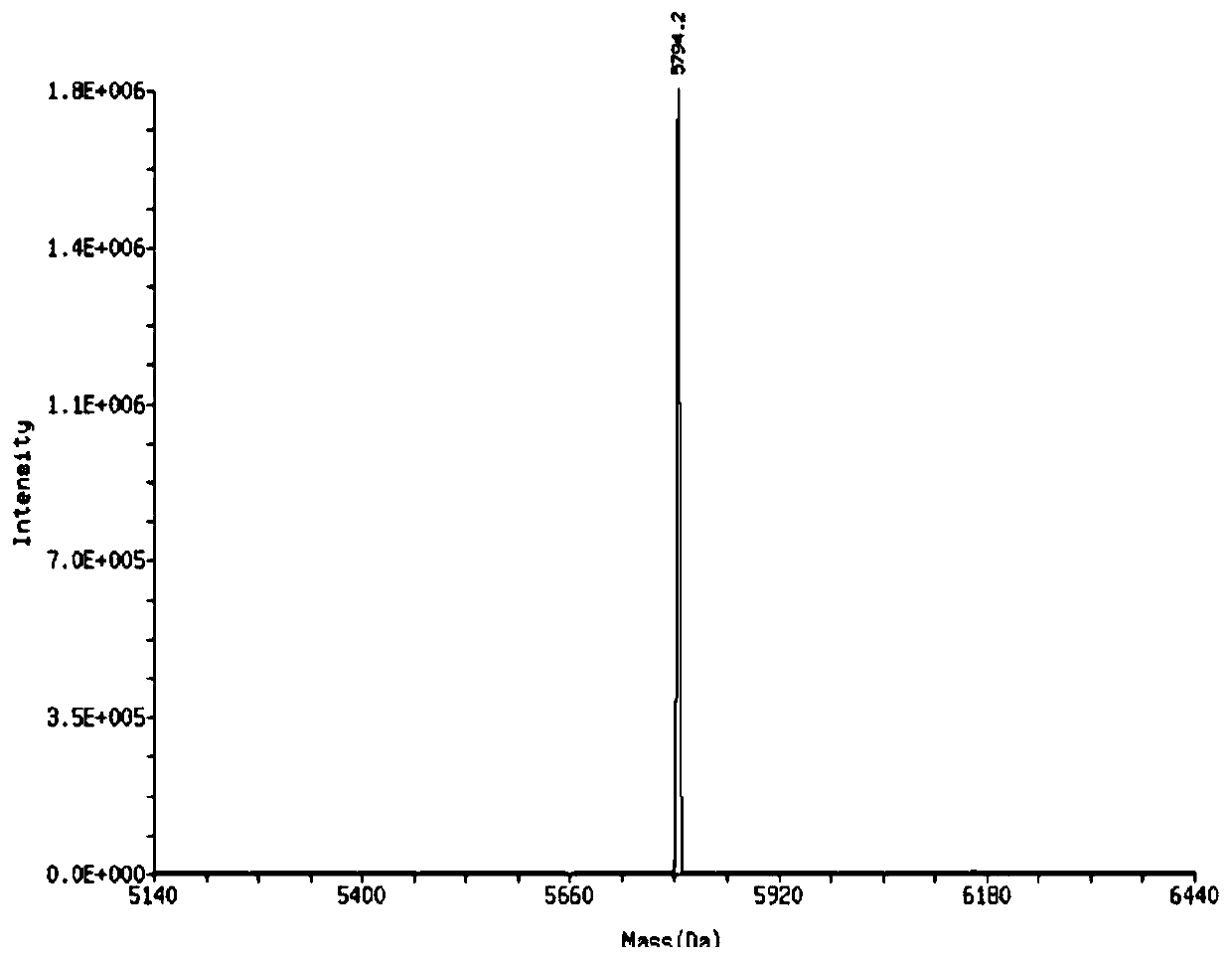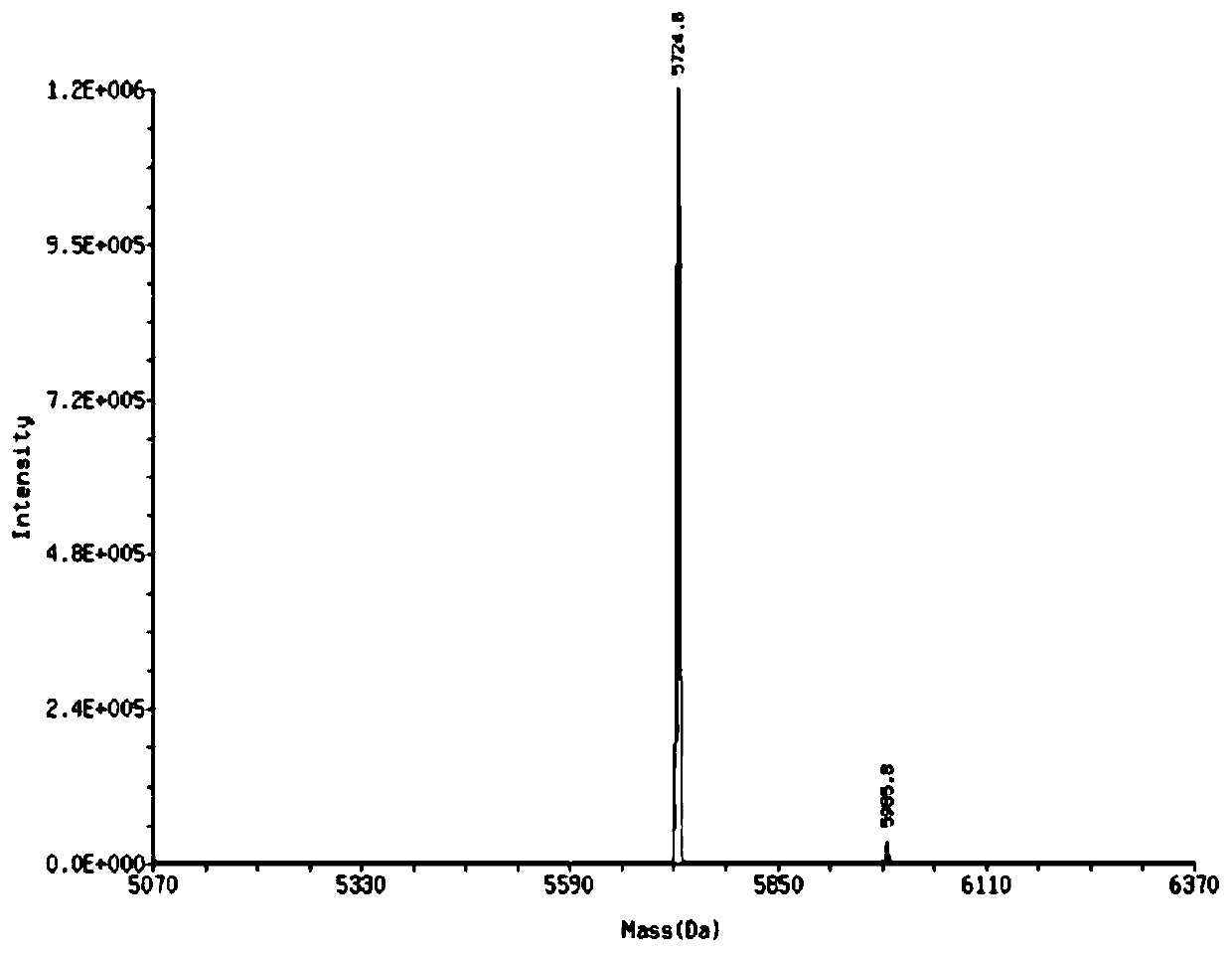Immunoadjuvant of diffuse large B-cell lymphoma and application of immunoadjuvant
An immune adjuvant, B cell technology, applied in the field of biomedicine, can solve the problems of lack of specificity, long-term toxicity of drugs, lack of drugs, etc., and achieve the effect of reducing the rate of cell proliferation
- Summary
- Abstract
- Description
- Claims
- Application Information
AI Technical Summary
Problems solved by technology
Method used
Image
Examples
Embodiment 1
[0040] An immune adjuvant for diffuse large B-cell lymphoma, including a nucleic acid adjuvant composed of targeted ODN, the phosphate backbone of the targeted ODN is fully thio-modified, and the sequence of the targeted ODN is as shown in SEQ ID NO: 1 shown.
[0041] After dissolving the three targeted ODNs shown in Table 3 (wherein the third one is the targeted ODN shown in SEQ ID NO: 1), they were respectively dissolved in phosphate buffered saline solution and adjusted to concentrations of 5 μg / ml and 10 μg respectively. / ml, 15μg / ml and 20μg / ml for use. Take the human-derived DLBCL cell lines SU-DHL-2 and SU-DHL-6 in the logarithmic growth phase, and adjust the cell concentration to 5x10 with 1640 medium containing 10% fetal bovine serum 6 / ml, inoculate in 24-well plate, 1ml / well, add three targeted ODNs of different concentrations to the cells respectively, at 37°C, 5% CO 2 Cultivate in the cell incubator for 0, 12, 24, 48, and 72 hours, collect the cells incubated wi...
Embodiment 2
[0044] The human DLBCL cell lines SU-DHL-2 and SU-DHL-6 in logarithmic growth phase were inoculated in 96-well plates, divided into experimental group and control group, with 5000 cells per well, and SEQ ID NO: 1 The indicated targeted ODN was added to the cells of the experimental group at a concentration of 10 μg / ml, co-cultured at 37°C in a 5% CO2 cell incubator, and the cell viability was detected once every 24 hours using the CCK8 kit ( Figure 8-9 ). Add 10 μl CCK8 detection reagent to each well 2 hours before detection, 37°C, 5% CO 2 After incubation for 2 h, the OD value of each well at 450 nm was measured with a microplate reader. Relative proliferation activity = OD value of treatment group / OD value of blank control group. The results showed that, compared with the control group, the cell proliferation rate in the experimental group decreased significantly, indicating that co-incubation of the targeted ODN shown in SEQ ID NO: 1 with DLBCL cells can significantly re...
Embodiment 3
[0046] Harvest mouse B lymphoma cells A20 in the logarithmic growth phase, adjust the concentration to 2x10 6 / 200 μl, add doxorubicin (final concentration: 100 μg / ml), bathe in 37°C water for 30 minutes, wash with PBS three times, add an equal amount of normal saline for later use. Female DBA / 2 mice weighing about 25 g were randomly divided into three groups: control group, 1x10 5 tumor cell group and 1x10 6 Tumor cell group. The above-mentioned inactivated tumor cells were inoculated under the right ribs of the mice in the latter two groups, and the same amount of normal saline was inoculated in the control group. After 14 days, the three groups of mice were inoculated with 1×10 6 , 1×10 5 , 1×10 6 , 1×10 6 , 1×10 5 , 1×10 6 tumor cells. The tumor formation rate and tumor regression phenomenon of mice in each group were observed.
[0047] The results are shown in Table 4. It can be seen from Table 4 that all the mice in the control group and the immunized mice form...
PUM
| Property | Measurement | Unit |
|---|---|---|
| weight | aaaaa | aaaaa |
Abstract
Description
Claims
Application Information
 Login to View More
Login to View More - R&D
- Intellectual Property
- Life Sciences
- Materials
- Tech Scout
- Unparalleled Data Quality
- Higher Quality Content
- 60% Fewer Hallucinations
Browse by: Latest US Patents, China's latest patents, Technical Efficacy Thesaurus, Application Domain, Technology Topic, Popular Technical Reports.
© 2025 PatSnap. All rights reserved.Legal|Privacy policy|Modern Slavery Act Transparency Statement|Sitemap|About US| Contact US: help@patsnap.com



